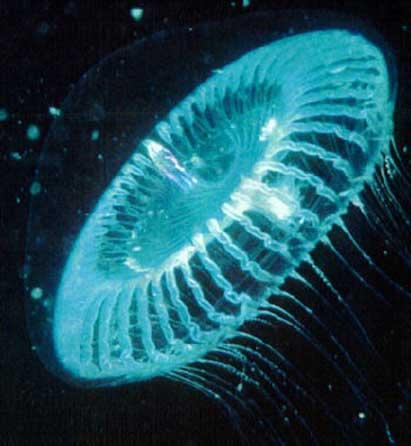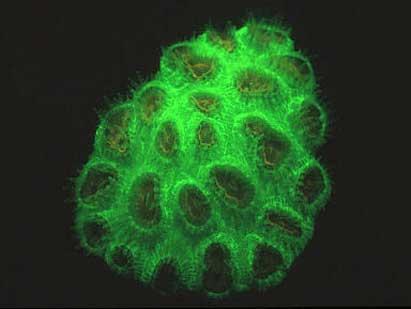The light of the trapped jellyfish
2002/07/16 Elhuyar Zientzia

Bioluminescence, the ability to generate own light, is a unique feature of very few animals. One of the best known animals is the Aequorea victoria moka. This animal that lives at the bottom of the oceans is able to produce a fluorescent protein called GFP.
Protein is very interesting for scientists, as it is very useful for many trials: it can be used to know the chemical reactions that occur in cells, for example, fluorescent protein. To do this, the protein will adhere to the molecule that interests the scientist and will emit fluorescence by absorbing light from the outside. Thus, the scientist will have in sight the molecule he wanted to see.
However, the protein does not emit a very strong fluorescence and its duration is very limited. To improve it, a group of British scientists have cloned and modified the protein producing jellyfish gene.
The new protein obtained is 100 times brighter than the original and it is enough to have it in the light so that the fluorescence remains in days. They say it emits fluorescence until the protein degrades, so it is very appropriate for monitoring long chemical reactions that occur in the cell.
According to scientists who have managed to produce a new protein, they still do not know all the uses of this protein, but the possibilities are endless.

Gai honi buruzko eduki gehiago
Elhuyarrek garatutako teknologia





